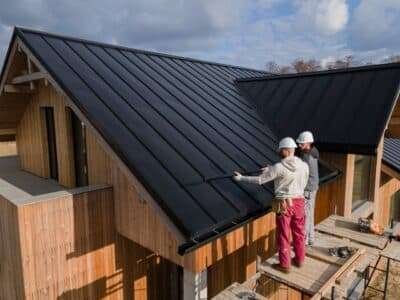Installing a Vehicle Wedge Barrier at your home can help prevent accidents and injuries. A barrier is also valuable for keeping vehicles from accessing your driveway and patio. It is an excellent addition to any property and can be installed in various ways. For instance, it can be surface-mounted or placed on a shallow foundation.
Shallow mount or shallow foundation:
When installing a vehicle wedge barrier, a shallow mount or shallow foundation offers the convenience of a standard, flush-mounted barrier but avoids digging into the ground. Such a system can be configured to meet any specific requirements. Besides avoiding excavation, such a barrier provides maximum security against unauthorized wheeled vehicles.
Shallow-mount wedge barriers are typically used at sports stadiums, power plants, and government facilities. They can be installed in as little as 19 inches of excavation. Frequently, they are integrated with traffic lights and gate arms. Alternatively, they can be stand-alone installations.
A typical wedge barrier is constructed of a series of plates. The wedge plate is connected to the wedge barrier via a hinge mechanism. This mechanism is designed to operate at about 120 complete cycles per hour.
One advantage of using this type of mechanism is the ability to be operated by an accumulator or hand pump. These devices can quickly actuate the barrier to a deployed position in an emergency.
A wedge barrier is installed on the roadway surface as with conventional vehicle barrier systems. It consists of a blocking member recessed into the foundation and a support member. An impact-absorbing linkage connects the two. When a vehicle passes over the barrier, the impact force is transferred to the foundation and distributed through the support members.
A hydraulic system controls the barrier by a drive mechanism in the foundation’s sub-frame. This drive mechanism can be a motor, screw actuator, or ram.
The control linkage is also connected to the bottom side of the wedge plate. It transfers the linear deploying force of the wedge to the sub-frame.
Active Vehicle Barriers (AVB) like wedge barrier operators:
Operational Vehicle Barriers (AVB) are devices that control the movement of vehicles into and out of a location. They can be passive or active and help prevent hostile activity or regulate access to an area.
AVB systems can be either electric or hydraulic and are available for different applications. Hydraulic barriers offer a quick response to emergencies. They are easy to operate, durable, and blend in with the road.
AVB systems include a wide range of equipment, including heaters, drainage, controls, and shelters. Some models also incorporate battery backup systems.
AVB systems can regulate access to a particular location, such as a stadium, airport, or corporate headquarters. In addition, they can be configured with other security features to provide additional protection. These features can include secondary traffic control devices, guard/control booths, caution signs, and other warning lights.
AVB systems can be installed permanently or as temporary measures. They are designed for use at various locations, including bus stations, shopping centers, and sports stadiums. Depending on the type of barrier, they can be operated manually or automatically.
Hydraulic wedge barriers are designed to withstand heavy impact. They can be deployed in less than five seconds. It makes them a fast, reliable solution. With proper maintenance, they can last for years.
Wedge vehicle barriers are designed to stop vehicles in their tracks and are ideal for anti-ram applications. Whether used in a car park or a stadium, they significantly protect a high-security facility.
Wedge barriers can be installed in all climates. They are available in various widths, from 8 feet to 14 feet. While they are easy to install, they may require some excavation.
Surface-mount:
Surface-mount vehicle wedge barrier systems offer adequate protection against unauthorized vehicle access. These barriers have a variety of advantages, including durability, high performance, and ease of maintenance. They may be used in corporate headquarters and stadiums, among other applications. Some of these systems even feature LED lights to help eliminate the need for stoplights.
Barrier 10 is attached to foundation 14 by mounting brackets 71 and 73. This installation method also reduces the amount of debris that can collect beneath the barrier.
An anchor 30 is coupled to barrier 10. Anchors may be made of concrete, steel, or a combination of these materials. Depending on the foundation type, the anchor’s upper side may be flush with the foundation surface, partially exposed, or raised above the surface.
Once the barrier is mounted on the anchor, it is secured to the anchor by bolts. Alternatively, mechanical fasteners may be used. A lifting mechanism is provided for the wedge plate 16. This device lifts and lowers the wedge plate. In the deployed position, the wedge plate is positioned on surface 12, flush with foundation 14.
When the wedge plate is in the retracted position, the wedge is not used as a traffic-controlling device. However, it is still present and may be used to block vehicles passing through the barrier.
The wedge plate is supported by safety legs 86, which extend from underneath the wedge plate. During maintenance, these legs may be replaced or extended.
In addition, component 52 on the underside of the wedge plate may be replaced. These components include an electromechanical actuator, a cam, a rod, and springs.
Linkage assemblies 72 are likewise located on the underside of the wedge plate. These linkage assemblies may be attached to front brackets 71 or other coupling mechanisms.









